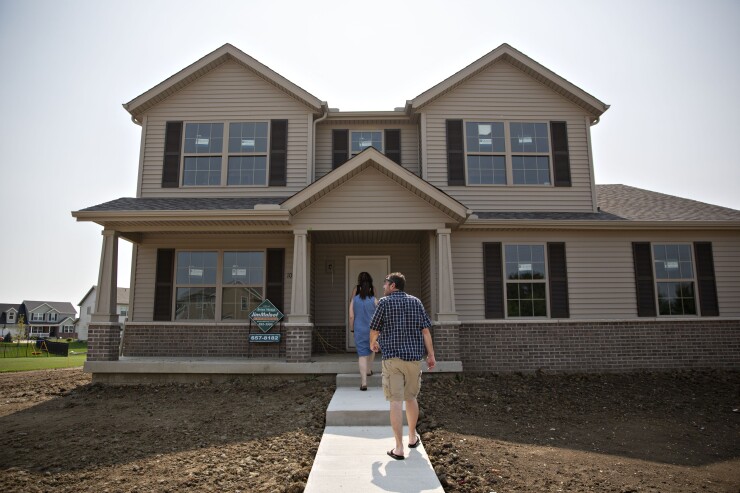Sales of new homes in January fell to the weakest pace since October, driven by a decline in the Midwest as still-elevated prices keep buyers on the sidelines.
Single-family home sales

The data extend a run of weakness amid elevated prices and wage growth that — while improving — has failed to keep pace with housing costs in recent years. Other reports have showed home prices rose by the least in four years in December and existing-home sales, which comprise the bulk of the market, fell in January to the slowest pace since 2015.
At the same time, tax cuts that took effect in 2018 have given Americans more take-home cash and lower mortgage rates have eased constraints on affordability. Wage gains are also starting to outpace home prices, which could help in coming months. New-home purchases are seen as a timelier barometer of the market, as they're calculated when contracts are signed rather than when they close, like the previously owned homes data.
Other recent data showed contracts to purchase existing homes rose in January by the most since 2010, snapping a six-month streak of declines. The number of properties sold for which construction hadn't yet started declined to 183,000, the lowest in three months, showing a weaker pipeline of building for the coming months.
Purchases of new homes dropped in three of four U.S. regions, led by the biggest decline in the Midwest since 2012, while sales in the South fell by the most since 2015. Purchases in the West gained. The supply of homes at the current sales rate climbed to 6.6 months from 6.3 months in December. The number of new homes for sale at the end of the month eased to 336,000, indicating a slight tightening of supply.
The report, released jointly by the Census Bureau and Department of Housing and Urban Development, tends to be volatile: it showed 90% confidence that the change in sales last month ranged from a 23.2% drop to a 9.4% increase. Thursday's figures are the second set of monthly data in less than two weeks, an unusual occurrence owing to disruptions from the government shutdown. February figures will be released March 29, four days later than originally scheduled.





